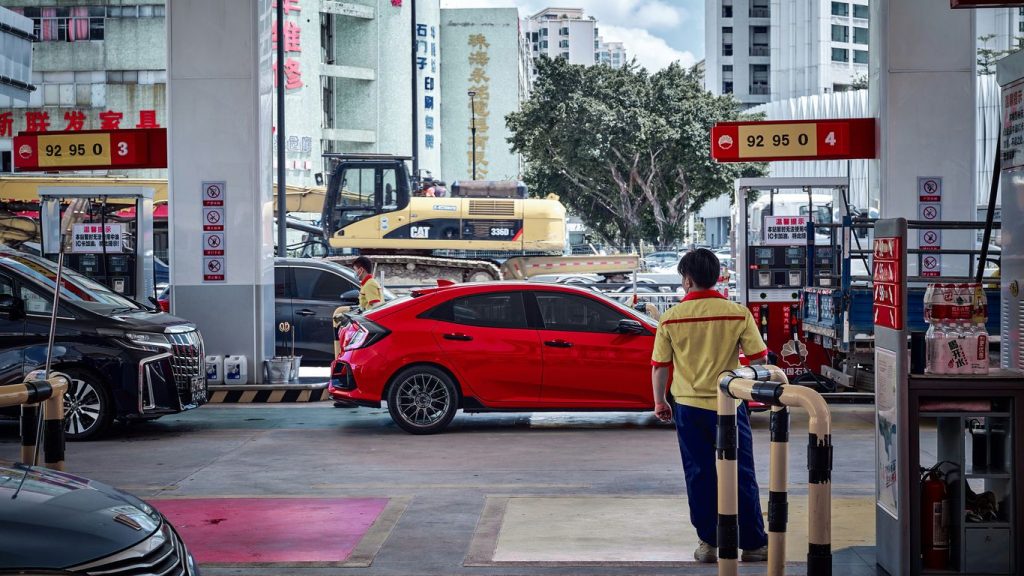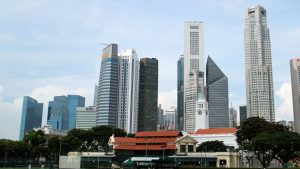Driving in Singapore can get pretty expensive, and keeping your fuel costs down is a smart move for your wallet. Whether you’re zipping around the CBD or heading out for a weekend drive, there are plenty of ways to be more fuel-efficient. We’ve put together some straightforward tips to help you save on fuel in Singapore for 2025. Let’s get started!
Key Takeaways
- Adjust your driving style by maintaining a steady speed and anticipating traffic to avoid sudden braking and acceleration, which wastes fuel.
- Make sure your tires are properly inflated and understand your car’s fuel economy to get the most out of every drop.
- Take advantage of loyalty programs and compare prices at different petrol stations to find the best deals.
- Keep your car in good shape with regular maintenance, like engine tune-ups and clean air filters, for better fuel efficiency.
- Reduce the weight in your car and plan your routes to avoid traffic jams, which will help you save on fuel.
Optimize Your Driving Habits

Making small adjustments to how you drive can significantly impact your fuel consumption. It’s not just about the car itself, but how you interact with it on the road. Thinking about your driving style is a simple yet effective way to save money on gas.
Maintain Consistent Speed
Sudden acceleration and braking are major fuel guzzlers. Try to maintain a steady speed whenever possible. On highways, using cruise control can help keep your speed consistent, leading to better fuel economy. Avoid rapid changes in speed, as this forces your engine to work harder and consume more fuel. Smooth driving is key.
Anticipate Traffic Flow
Look ahead and anticipate what other drivers and the traffic lights are doing. If you see a red light ahead, ease off the accelerator early instead of braking hard at the last moment. Similarly, if you see traffic slowing down, gently reduce your speed rather than waiting to brake suddenly. This smooth anticipation helps prevent unnecessary acceleration and braking cycles, saving fuel.
Reduce Unnecessary Idling
Idling your engine while waiting, even for short periods, wastes fuel. If you anticipate being stopped for more than 30 seconds, it’s generally more fuel-efficient to turn off your engine and restart it when you’re ready to go. This is especially relevant for situations like waiting for someone, or prolonged stops at train crossings.
Small changes in driving habits can add up to substantial fuel savings over time. Being mindful of your acceleration, braking, and idling can make a real difference to your wallet and the environment.
Here are a few tips to help you drive more efficiently:
- Smooth Acceleration: Press the accelerator pedal gently and gradually. Avoid flooring it from a standstill.
- Anticipate Stops: Look far ahead to see traffic lights, stop signs, and slowing traffic. Coast to a stop when possible.
- Minimize Idling: Turn off your engine if you expect to be stopped for more than 30 seconds.
- Maintain Steady Speed: Use cruise control on highways for consistent speed. Avoid frequent speed changes on all roads.
By adopting these driving techniques, you can improve your car’s fuel efficiency and contribute to a greener environment. Remember, consistent application of these habits is what yields the best results. For more on managing car costs, you might want to look into car insurance quotes.
Leverage Fuel Efficiency Technologies
Understand Your Vehicle’s Fuel Economy
Knowing how much fuel your car uses is the first step to saving money. Different cars have different fuel efficiency ratings, and even within the same model, driving habits can change these numbers. For instance, hybrid vehicles in Singapore are showing impressive results, with some models achieving up to 26 km/L, making them a smart choice for city driving. Understanding your car’s specific fuel economy helps you set realistic savings goals.
Consider Eco-Driving Features
Many modern cars come equipped with features designed to improve fuel efficiency. These can include things like start-stop systems that turn off the engine when you’re stationary, or eco-driving modes that adjust engine performance and transmission settings for better mileage. Some vehicles even offer real-time feedback on your driving style, helping you make adjustments on the go. Singapore is also moving towards cleaner energy, with a ban on new diesel car registrations from January 2025, encouraging the adoption of more fuel-efficient technologies like electric vehicles.
Regularly Check Tire Pressure
This is a simple yet often overlooked aspect of fuel saving. Underinflated tires create more rolling resistance, meaning your engine has to work harder to move the car, which directly translates to higher fuel consumption. It’s recommended to check your tire pressure at least once a month, and always when the tires are cold. You can usually find the correct tire pressure for your vehicle on a sticker inside the driver’s side doorjamb or in your owner’s manual. Keeping your tires properly inflated not only saves fuel but also improves safety and tire lifespan.
Smart Refueling Strategies
Utilize Loyalty Programs and Credit Cards
Getting the best bang for your buck at the pump involves more than just picking a station. Many petrol companies in Singapore have loyalty programs that offer points or discounts on future purchases. Signing up is usually free and can add up over time.
Pairing these loyalty programs with the right credit cards can lead to significant savings. For instance, certain credit cards offer substantial cashback or discounts specifically for fuel purchases. It’s worth researching which cards align with your preferred petrol station and spending habits. Some cards might give you up to 20% or more back on your fuel expenses when you meet certain spending criteria. Always check the terms and conditions, like minimum spending requirements or cashback caps, to make sure you’re getting the full benefit.
Compare Fuel Prices Across Stations
While the price difference between major petrol stations might seem small on a per-litre basis, it can add up, especially if you drive frequently. Take a moment to check prices before you head to the station. Apps or online price comparison tools can be helpful for this. Even a few cents difference per litre can mean noticeable savings over the course of a year. Remember that different stations might have different promotions or loyalty benefits, so a quick comparison can pay off.
Avoid Topping Up During Peak Hours
This might seem like a minor point, but it can actually impact your wallet. Some sources suggest that fuel prices might be slightly higher during peak hours, or that the fuel itself might be less dense due to temperature fluctuations. While the impact of temperature on fuel density is debated, avoiding queues during busy periods can save you time and potentially a bit of money. Consider refueling during off-peak hours when stations are less crowded. This can also make the refueling process smoother and quicker.
Vehicle Maintenance for Fuel Savings

Keeping your car in good shape is more than just about avoiding breakdowns; it’s also a smart way to save on fuel. When your vehicle runs efficiently, it naturally uses less petrol. Think of it like taking care of yourself – when you’re healthy, you have more energy, right? Your car is similar.
Regular Engine Tune-Ups
An engine that’s not running optimally can waste a surprising amount of fuel. Over time, spark plugs can get worn out, and other engine components might need adjustments. Getting regular tune-ups, typically every 10,000 to 15,000 kilometers, can make a noticeable difference in your fuel consumption. This service usually involves checking and replacing spark plugs, inspecting filters, and making sure all systems are working together smoothly. It’s a proactive step that can prevent bigger, more expensive issues down the line and keep your car running more efficiently.
Keep Air Filters Clean
Your engine needs air to burn fuel. The air filter is like the lungs of your car, and if it gets clogged with dirt and debris, the engine struggles to breathe. This struggle means it has to work harder, and that often translates to using more fuel. Checking your air filter is usually a simple task, and cleaning or replacing it is relatively inexpensive. Most manufacturers recommend checking it during regular servicing, but if you drive in dusty conditions, you might want to check it more often. A clean air filter allows for better airflow, helping your engine perform at its best and use fuel more effectively.
Use Recommended Grade of Oil
Engine oil is the lifeblood of your car, lubricating moving parts and reducing friction. Using the correct grade of oil, as specified in your car’s manual, is important. The wrong oil can create more friction, making the engine work harder and consume more fuel. Modern cars often require specific synthetic oils that offer better protection and efficiency. Always stick to the manufacturer’s recommendations for oil type and change intervals. This simple step contributes to smoother engine operation and better fuel economy. You can find out more about average car maintenance expenses in Singapore to budget for these services here.
Regular maintenance isn’t just about keeping your car running; it’s about making it run smarter and more economically. Small checks and timely replacements can add up to significant fuel savings over time, making your driving experience more affordable and environmentally friendly.
Minimize Vehicle Load and Drag

Remove Unnecessary Weight
Think about what you carry in your car. Extra weight means your engine works harder, using more fuel. Go through your boot and cabin regularly. Are those old sports equipment, extra bags, or that collection of forgotten CDs still needed? Removing even a small amount of excess weight can make a difference over time. Airlines, for instance, are very strict about weight reduction to save fuel, and the same principle applies to your car.
Reduce Aerodynamic Drag
Anything that sticks out from your car can create drag, forcing your engine to burn more fuel, especially at higher speeds. This includes things like roof racks, bike carriers, or even open windows. When not in use, take off any roof racks or cargo boxes. Keeping windows closed at highway speeds also helps.
Small changes in how your car interacts with the air can lead to noticeable fuel savings. It’s about making your car more streamlined.
Plan Routes to Avoid Congestion
Getting stuck in traffic isn’t just frustrating; it’s a major fuel drain. Constant stopping and starting, and idling, use up a lot of petrol. Before you set off, take a moment to check traffic conditions. Using a navigation app can help you find routes that bypass heavy congestion. This not only saves fuel but also gets you to your destination faster and with less stress.
| Factor | Impact on Fuel Efficiency |
|—|—|—|
| Extra Weight (e.g., 50kg) | ~1-2% decrease |
| Roof Rack (unloaded) | ~5-10% decrease |
| Open Window (at 80km/h) | ~5% decrease |
Explore Alternative Transportation

While owning a car offers convenience, Singapore’s commitment to public transport and alternative mobility solutions means you have excellent options to reduce your reliance on personal vehicles and save on fuel costs.
Utilize Public Transport Options
Singapore boasts a highly efficient and extensive public transportation network. The Mass Rapid Transit (MRT) and bus systems are reliable, affordable, and cover most of the island. For instance, the upcoming Cross Island Line (CRL) will further improve connectivity, offering commuters more travel choices and helping to ease congestion across the network. A monthly concession card for unlimited MRT and bus rides is a cost-effective option for regular commuters.
Consider Carpooling or Ride-Sharing
If public transport isn’t always feasible, carpooling or using ride-sharing services can be a smart alternative. Sharing rides with colleagues or neighbors for daily commutes can significantly cut down on individual fuel expenses. Apps like Grab and Gojek offer various ride options, and some even have carpooling features. This not only saves money but also helps reduce the number of vehicles on the road, contributing to less traffic and lower emissions.
Evaluate Electric Vehicle Benefits
As the world moves towards greener transportation, electric vehicles (EVs) are becoming a more viable option. While the initial cost might be higher, EVs eliminate fuel expenses entirely, replacing them with electricity costs, which are generally lower. Additionally, EVs often have lower maintenance costs and benefit from government incentives. As the charging infrastructure in Singapore continues to expand, an EV could be a long-term fuel-saving strategy.
With the high cost of car ownership in Singapore, including Certificate of Entitlement (COE) prices, exploring alternatives like public transport, carpooling, and eventually electric vehicles can lead to substantial savings and a more sustainable lifestyle.
Thinking about getting around town without a car? There are many cool ways to travel that are good for the planet. From bikes to buses, discover how you can move differently. Visit our website to learn more about these fun and eco-friendly options!
Wrapping Up: Smarter Driving for 2025
So, there you have it. Keeping your car running efficiently and saving money on fuel in Singapore isn’t about one big change, but a series of small, smart choices. From how you drive to how you maintain your vehicle, and even how you use your credit cards for petrol, every bit helps. As fuel prices and other car-related costs continue to be a factor, adopting these habits can make a real difference to your wallet. Think of it as a continuous effort to be a more mindful driver. By putting these tips into practice, you’ll not only save money but also contribute to a smoother driving experience for everyone on the road.
Frequently Asked Questions
How can I drive more efficiently to save fuel?
To save fuel, try to keep your speed steady and avoid sudden braking or speeding up. Look ahead to see what the traffic is doing so you can slow down smoothly instead of jamming on the brakes. Also, turn off your engine if you’re going to be stopped for more than a minute, like waiting for someone or at a long traffic light.
What are some technology tips for better fuel economy?
Knowing how much fuel your car uses is key. Check your car’s manual or dashboard for its fuel economy. Also, make sure your tires are inflated correctly, as this makes a big difference. Some newer cars have ‘eco-driving’ modes that can help too.
Are there smart ways to buy fuel?
Yes! Many gas stations have loyalty programs or credit cards that give you discounts or points. It’s also a good idea to compare prices at different stations if you can. Sometimes, filling up when it’s not super busy can also lead to better deals.
How does car maintenance help save fuel?
Keeping your car in good shape is important for saving gas. Make sure your engine gets tuned up regularly, and change your air filters when they get dirty. Using the right kind of oil recommended by your car’s maker also helps it run more smoothly and use less fuel.
What’s the deal with car weight and fuel saving?
Less weight means your car uses less fuel. So, take out anything heavy you don’t need from your trunk or back seat. Also, things like roof racks can make your car less ‘slippery’ in the air, which uses more gas. Try to plan your trips to avoid traffic jams too!
Should I consider other ways to get around besides my car?
Definitely! Singapore has great public transport like buses and trains, which is usually much cheaper and better for the environment than driving alone. Carpooling with friends or colleagues, or using ride-sharing services, can also cut down on your fuel costs and help reduce traffic.







